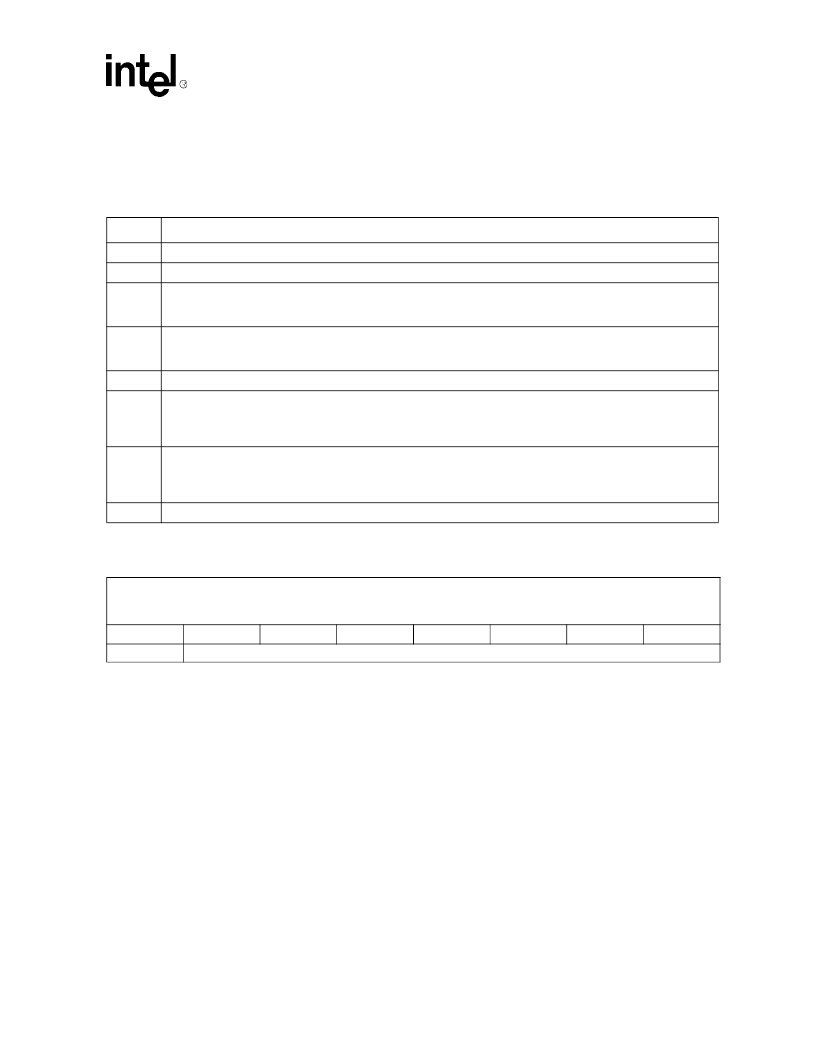- 您現(xiàn)在的位置:買賣IC網(wǎng) > PDF目錄379802 > CD1283 (Intel Corp.) IEEE 1284-Compatible Parallel Interface PDF資料下載
參數(shù)資料
| 型號(hào): | CD1283 |
| 廠商: | Intel Corp. |
| 英文描述: | IEEE 1284-Compatible Parallel Interface |
| 中文描述: | 符合IEEE 1284兼容并行接口 |
| 文件頁數(shù): | 65/94頁 |
| 文件大?。?/td> | 1237K |
| 代理商: | CD1283 |
第1頁第2頁第3頁第4頁第5頁第6頁第7頁第8頁第9頁第10頁第11頁第12頁第13頁第14頁第15頁第16頁第17頁第18頁第19頁第20頁第21頁第22頁第23頁第24頁第25頁第26頁第27頁第28頁第29頁第30頁第31頁第32頁第33頁第34頁第35頁第36頁第37頁第38頁第39頁第40頁第41頁第42頁第43頁第44頁第45頁第46頁第47頁第48頁第49頁第50頁第51頁第52頁第53頁第54頁第55頁第56頁第57頁第58頁第59頁第60頁第61頁第62頁第63頁第64頁當(dāng)前第65頁第66頁第67頁第68頁第69頁第70頁第71頁第72頁第73頁第74頁第75頁第76頁第77頁第78頁第79頁第80頁第81頁第82頁第83頁第84頁第85頁第86頁第87頁第88頁第89頁第90頁第91頁第92頁第93頁第94頁

IEEE 1284-Compatible Parallel Interface
—
CD1283
Datasheet
65
The PFSR is read-only and provides current FIFO and data pipeline status. Host software should
examine these bits in response to pipeline interrupts or for polling operations.
This register is not directly cleared by reset, but the individual bits will reflect the status of other
registers. This register is cleared by device or FIFO reset.
7.3.14
Parallel FIFO Threshold Register
This register sets the FIFO threshold for initiating DMA requests for data transfer. The value is
expressed in bytes. Whenever DMAen is true, regular comparisons are made between the PFQR
(Parallel FIFO Quantity register) and the PFTR. If the value in the PFQR is greater than or equal to
the threshold, the DMA request logic becomes active and remains active until the FIFO is
essentially filled or emptied. An odd character or space in the FIFO may remain.
In the receive direction, the Holding register pipeline (consisting of PFHR1 and PFHR2) and
DMABUF (if DMA is enabled) are kept filled so that tagged data (for example, ECP-mode
addresses) can be detected and passed to the host via an interrupt. If the FIFO and data pipeline are
initialized for receive and, for example, 40 hex bytes are placed into the FIFO from the parallel
port, the first two of those bytes is automatically placed in the Pipeline registers. If the PFTR were
programmed to x
’
40 bytes, x
’
44 bytes must arrive to trigger a DMA transfer.
PFTR is cleared by a device reset; it is not cleared by FIFOres.
Bit
Description
7
Parallel FIFO Full:
If this bit is set, it indicates the parallel FIFO is full.
6
Parallel FIFO Empty:
If this bit is set, the parallel FIFO is empty.
5
Timeout:
This bit is set when Stale goes from false to true. In the receive direction, Timeout is delayed until the FIFO
is empty and all DMA cycles are complete. Timeout is a pipeline-interrupt condition and must be cleared manually by
the CPU by toggling ClearTo in the PACR or by a FIFO reset in the PFCR.
4
Holding Register Tag:
This bit indicates that a tagged character is in either the PFHR1, PFHR2, or both. This bit
being set will cause a host interrupt to be generated (if enabled). The host should examine the HRSR to determine
the exact cause(s) of this bit being set.
3
Holding Register Data:
If this bit is set, it indicates that either the PFHR1, PFHR2, or both contain data.
2
Stale:
This bit is set when the stale data timer expires (see description of SDTPR). If a single byte remains in the
data pipeline when this bit is set, a host interrupt is generated, the OneChar bit is set, and new data entering the
FIFO will not move into PFHR1 until PFHR2 is emptied. If two or more bytes remain in the pipeline when this bit is
set, a host interrupt is not generated, however, a DMA request will be generated if enabled.
1
One Character:
In the receive direction, when this bit is set it indicates that the FIFO is empty and stale, and one
character remains in the PFHR2. This condition occurs if an odd number of bytes is transferred through the parallel
interface. Since DMA cycles only moves an even numbers of bytes (words), an odd transfer leaves one byte
remaining. Host software must remove this character outside of DMA transfer cycles.
0
Data Error:
When this bit is set, it indicates that one or more of the bits in the DER (Data Error register) is set.
Register Name: PFTR
Register Description: Parallel FIFO Threshold
Access: R/W
8-Bit Hex Address: 3B
Default Value: 00
Bit 7
Bit 6
Bit 5
Bit 4
Bit 3
Bit 2
Bit 1
Bit 0
0
DMA Transfer Threshold
相關(guān)PDF資料 |
PDF描述 |
|---|---|
| CD1284 | IEEE 1284-Compatible Parallel Interface Controller with Two High-Speed Asynchronous Serial Ports |
| CD13002 | NPN SILICON PLANAR EPITAXIAL, HIGH VOLTAGE FAST SWITCHING POWER TRANSISTOR |
| CD14538 | CMOS DUAL PRECISION MONOSTABLE MULTIVIBRATOR |
| CD14538BMS | CMOS Dual Precision Monostable Multivibrator |
| CD15B-15MB | CD105B |
相關(guān)代理商/技術(shù)參數(shù) |
參數(shù)描述 |
|---|---|
| CD1284 | 制造商:INTEL 制造商全稱:Intel Corporation 功能描述:IEEE 1284-Compatible Parallel Interface Controller with Two High-Speed Asynchronous Serial Ports |
| CD-12AFFM-QL8D01 | 功能描述:MIDDLE 制造商:amphenol ltw 系列:* 零件狀態(tài):在售 標(biāo)準(zhǔn)包裝:10 |
| CD-12AFFM-QR8D01 | 功能描述:MIDDLE 制造商:amphenol ltw 系列:* 零件狀態(tài):在售 標(biāo)準(zhǔn)包裝:10 |
| CD-12AMMM-QL8D01 | 功能描述:MIDDLE 制造商:amphenol ltw 系列:* 零件狀態(tài):在售 標(biāo)準(zhǔn)包裝:10 |
| CD-12BFFA-LL7001 | 功能描述:MIDDLE 制造商:amphenol ltw 系列:* 零件狀態(tài):在售 標(biāo)準(zhǔn)包裝:10 |
發(fā)布緊急采購,3分鐘左右您將得到回復(fù)。